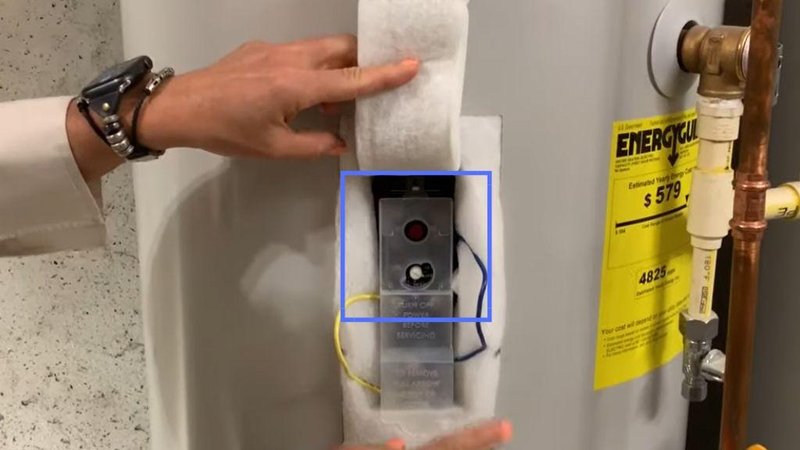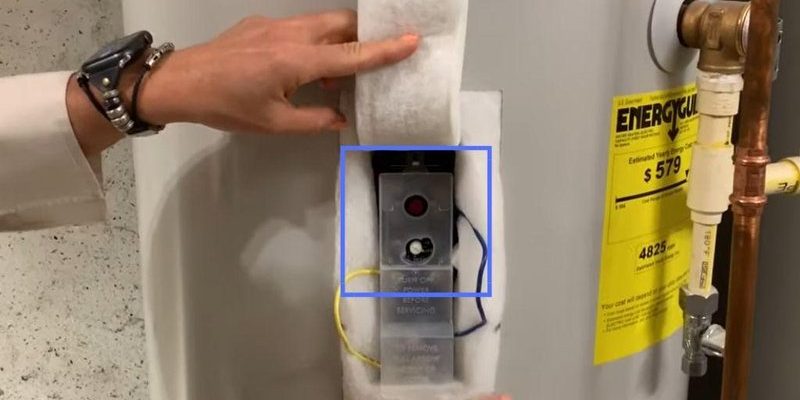
Picture this: the thermistor is like the thermostat in your house. When it malfunctions, it’s akin to your thermostat reading a wrong temperature in your home, causing discomfort. Similarly, when the thermistor in your water heater fails, it sends incorrect signals, prompting the error. This doesn’t mean your water heater is entirely out of commission; it just needs a reset, which is a bit like rebooting your computer when it freezes. Let’s dive into how you can perform this simple reset and get your hot water flowing again.
Understanding the Error Code OE
Before we get into the nitty-gritty of resetting, let’s understand what Error Code OE actually means. At its core, this code signifies an issue with the outlet’s thermistor, which might be reading improper temperatures. Imagine you’re trying to gauge the weather using a faulty thermometer—it’s like the device is constantly saying it’s freezing even when it’s sweltering hot outside. That’s what happens when the thermistor acts up; it gives misleading data to your water heater.
You might be wondering why this happens in the first place. Well, several factors could cause the thermistor to act out of line. Sometimes, mineral build-up or sediment in the water can interfere, much like trying to read a book through a fogged-up window. Other times, it’s simply a matter of age—components can wear down over time, just like how tires lose tread. But the good news is, acknowledging this error early can prevent more significant issues from cropping up.
So, what’s next once you understand the error? The immediate step is to consider a reset to see if this restores balance. Think of it as giving your water heater a chance to rethink and realign its operations. A simple reset might be all that’s needed to clear the error and bring your heater back to working order. Now, let’s walk through the resetting process.
Preparation Before Resetting
Before you roll up your sleeves and dive into resetting your water heater, it’s crucial to prepare both yourself and your device. First things first, safety should always be your top priority. Working with water heaters involves electricity and, sometimes, gas. So, start by turning off the power supply. It’s akin to making sure your car is in park before getting out—you don’t want any surprises!
Next, locate your water heater’s manual. If it’s not within reach, a quick online search can suffice. The manual is your guide, much like a map on a road trip, detailing your heater’s specific parts and instructions. Once you have that on hand, familiarize yourself with the water heater’s parts, especially where the reset button and thermistor are located.
Finally, gather your tools. While resetting generally doesn’t require a toolbox, having basic tools ready can be handy if you need to tighten or adjust anything. A flashlight might also be beneficial, considering heater closets aren’t always well-lit. With everything in place, you’re now ready to move on to the reset process.
Initiating the Reset Process
Alright, here’s where the magic happens. Begin with making sure the power is still off. You wouldn’t want to fiddle with a live appliance—it’s like trying to fix a moving car engine. After confirming it’s safe, open the access panel to your water heater. You should find the reset button behind this panel—it’s usually red and clearly marked, kind of like the emergency buttons you see in elevators.
Press and hold the reset button for about five seconds, then release it. This is the equivalent of giving your appliance a gentle nudge to wake up. After releasing the button, close the access panel and restore power to the water heater. If all goes well, the error code should clear, and your water heater should return to its regular cycle of heating water. It’s like watching a sleeping machine come back to life.
But here’s the deal—if the OE error persists after the reset, there might be a more intricate issue at play. It’s like having a persistent flu that won’t go away just with good rest. In such cases, it might be wise to contact a professional technician who can dive deeper into the problem.
Post-Reset Considerations
Once you’ve reset the water heater, it’s essential to monitor it closely for the next day or so. Keep an eye on its performance, similar to how you’d watch a recovering patient after a doctor’s visit. Listen for any unusual sounds and check if the water temperature feels right. These are good indicators that everything’s back to normal.
If all seems well, great! But if something feels off, consider whether there might be underlying issues. For example, continuous OE errors could signify a faulty thermistor that needs replacing, akin to a worn-out cog in a clock. In such cases, replacement might be more prudent than continuous resets.
As a preventative measure, regular maintenance can do wonders for your water heater’s longevity. Think of it like regular health check-ups; staying ahead of potential issues ensures your heater serves you well for years. Regularly flushing your water heater can help prevent sediment build-up, much like keeping a filter clean to prevent clogs.
In the end, being proactive about your water heater’s health can save you time, money, and cold showers in the long run. Here’s to warm, hassle-free days!
